Museums
Great places to allow your mind to expand
Nixon Library Visit 1/8/2010
Trains Page One - Trains Page Two - Apollo And Christmas Trees Page Three
This exhibit continues in the larger exhibit hall off the main entrance.
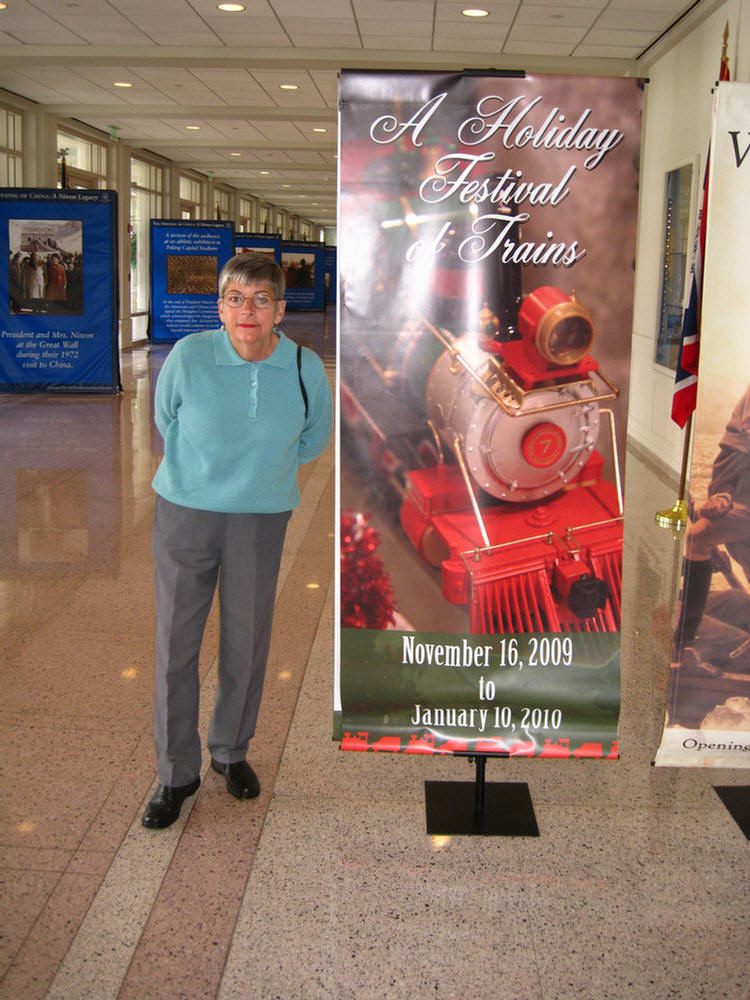
Train Signs Were Posted Along The Walls
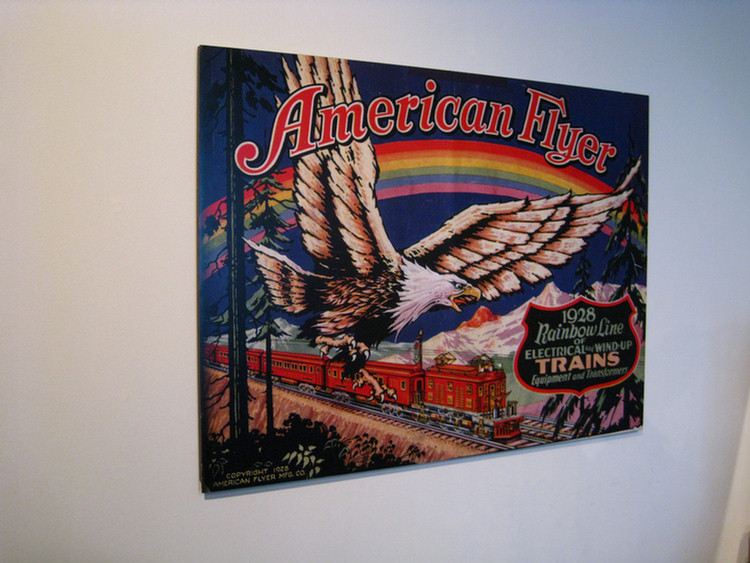
I had an American Flyer setup in my garage when I was growing up!
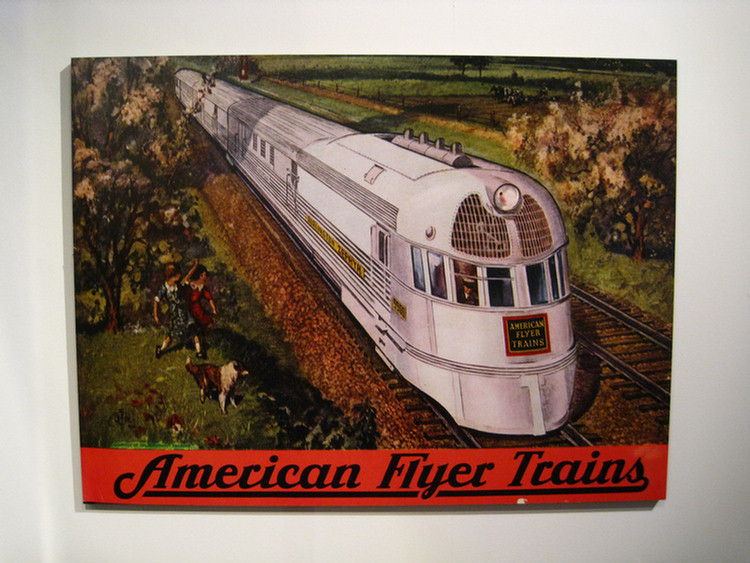
Did you know? - Although best remembered for the S gauge trains of the 1950s that it made as a division of the A. C. Gilbert Company, American Flyer was initially an independent company whose origins date back nearly a half century earlier. Chicago, Illinois-based toymaker William Frederick Hafner developed a clockwork motor for toy cars in 1901 while working for a company called Toy Auto Company. According to the recollections of William Hafner's son, John, he had developed a clockwork train running on O gauge track by 1905. More...
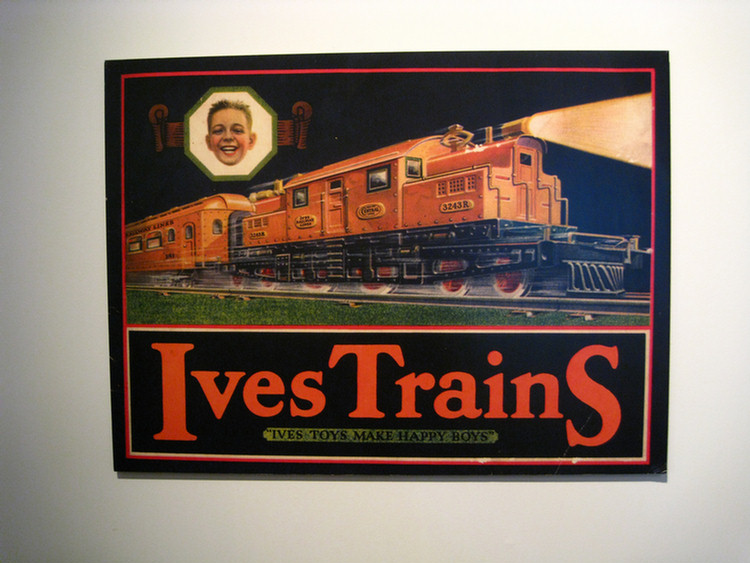
A major player in early 1900's
Did you know? - The Ives Manufacturing Company, an American toy manufacturer from 1868 to 1932, was the largest manufacturer of toy trains in the United States from 1910 until 1924, when Lionel Corporation overtook it in sales. Ives was founded in Plymouth, Connecticut by Edward Ives, a descendant of Plymouth colony governor William Bradford. The company initially produced paper dolls whose limbs moved in response to hot air, but soon began producing a wide range of toys, including a toy cannon that shot using real gunpowder and clockwork powered dolls and animals that could move. The clockwork toys were designed by Jerome Secor, Nathan Warner, and Arthur Hotchkiss and by the 1880s, Ives was a leading producer of these toys. More...
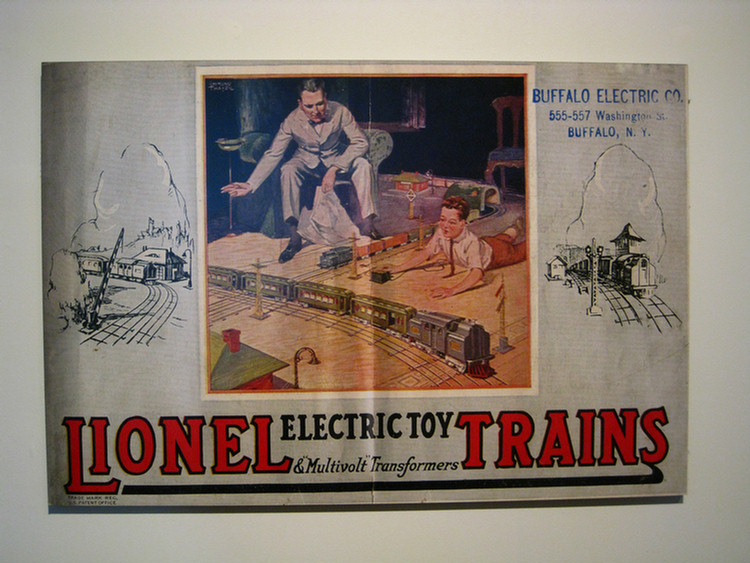
Did you know? - Lionel Corporation was an American toy manufacturer and retailer that did business from 1900 to 1993. Founded as an electrical novelties company, Lionel specialized in various products throughout its existence, but toy trains and model railroads were its main claim to fame. Lionel trains, produced from 1901 to 1969, drew admiration from model railroaders around the world for the solidity of their construction and the authenticity of their detail. During its peak years, in the 1950s, the company sold $25 million worth of trains per year.[1] In 2006, Lionel's electric train, along with the Easy Bake Oven, became the first two electric toys to be inducted into the National Toy Hall of Fame. It should also be noted that they ran a t.v. commercial ad in the mid 80's with a very well known and remembered theme "Lionel Kiddy City, turn that frown {clap-clap} upside-down."
Lionel remains the most enduring brand name associated with model trains in the United States, its products prized by collectors. Lionel, LLC now owns all of the trademarks and most of the product rights associated with Lionel Corporation; there is, however, no direct connection between the two companies. More...
Train Exhibits Were Popular At The 1948 Worlds Fair

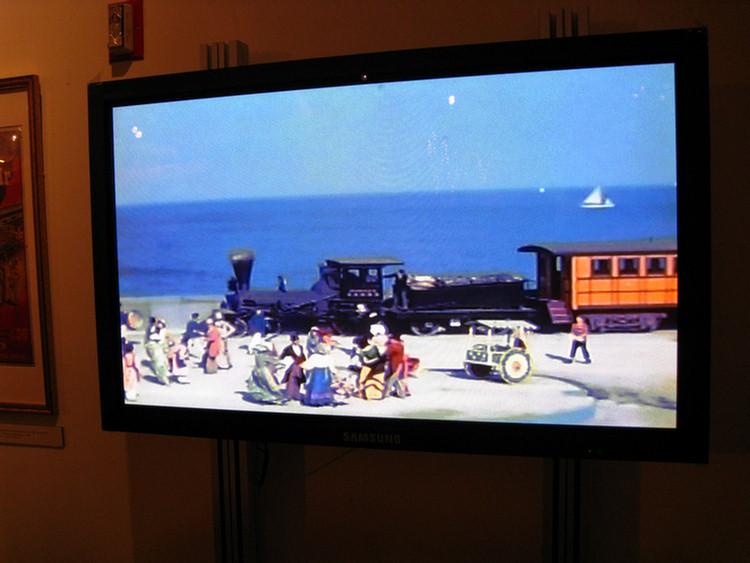
The Layout Is Now Five Tiers
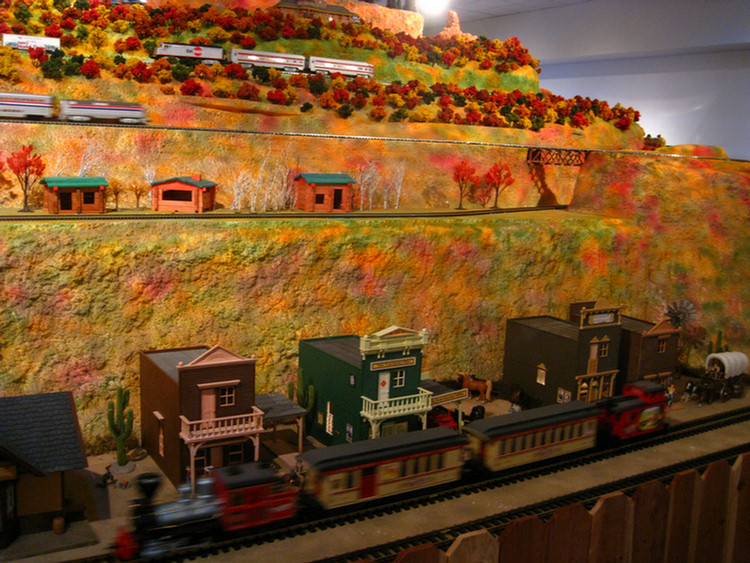
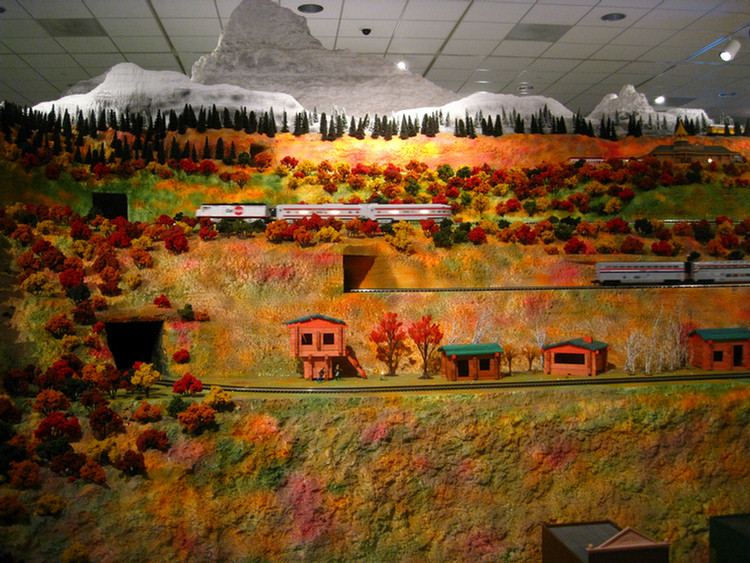
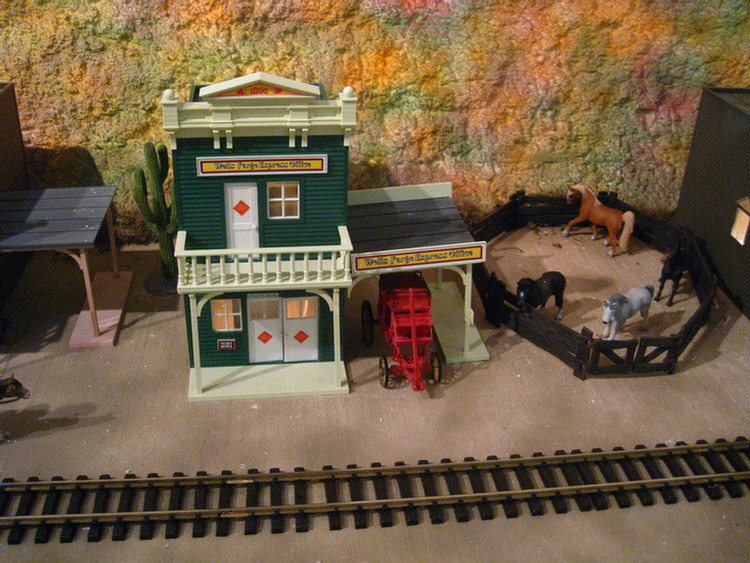
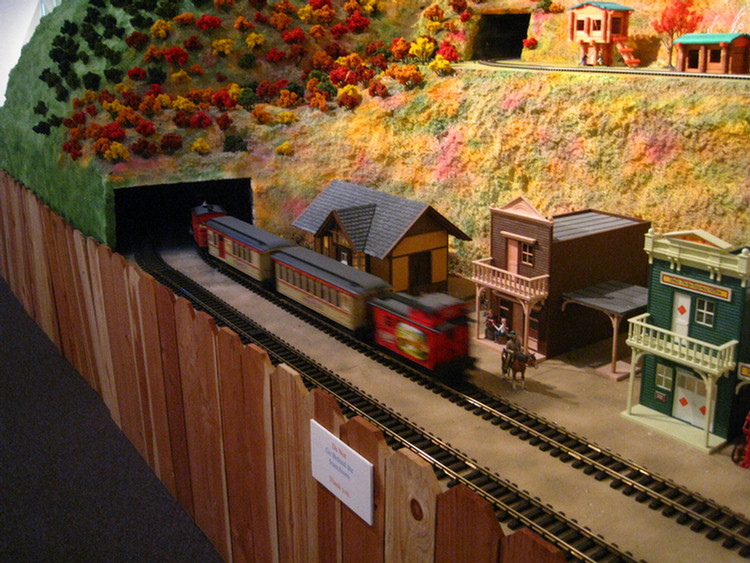
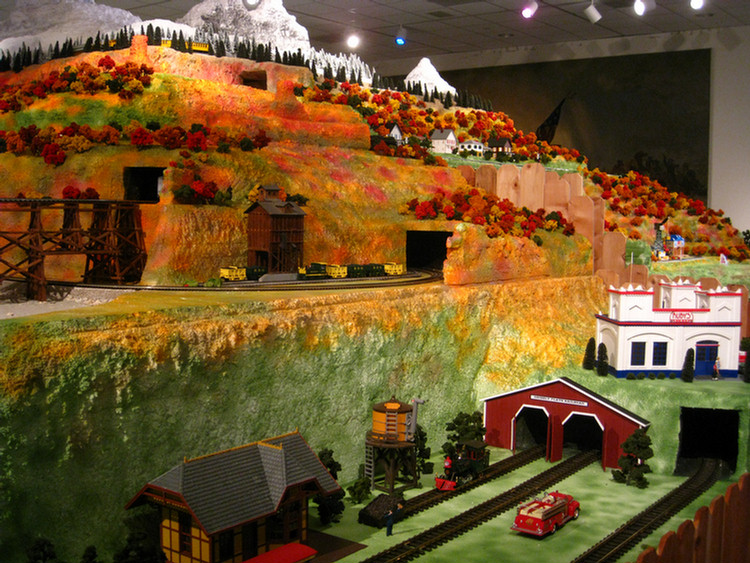

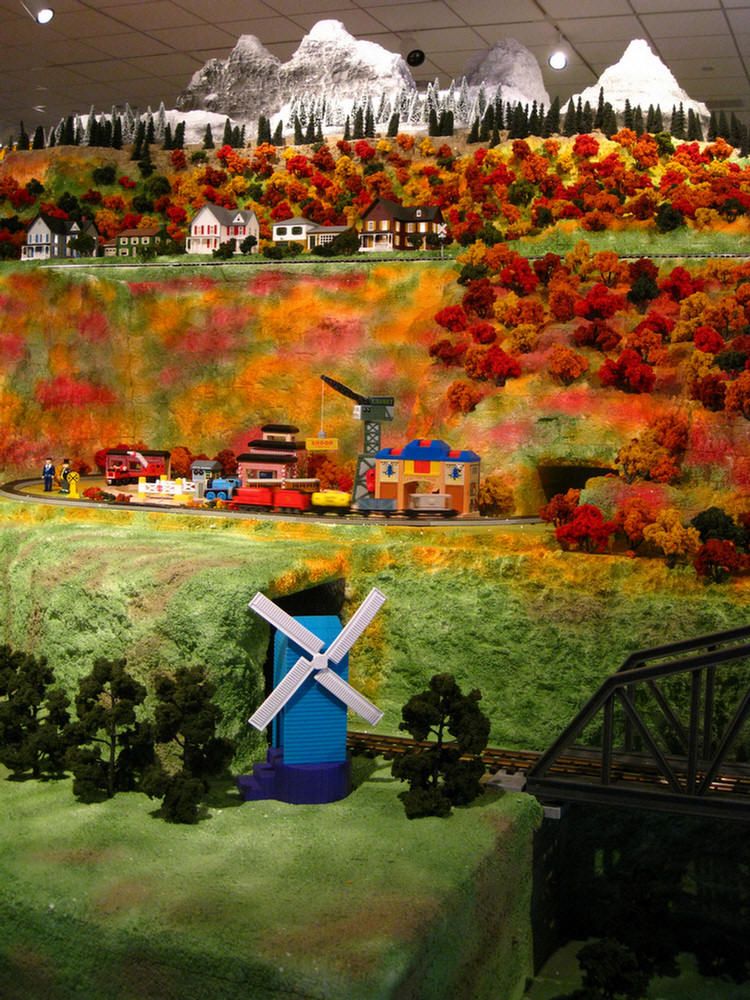
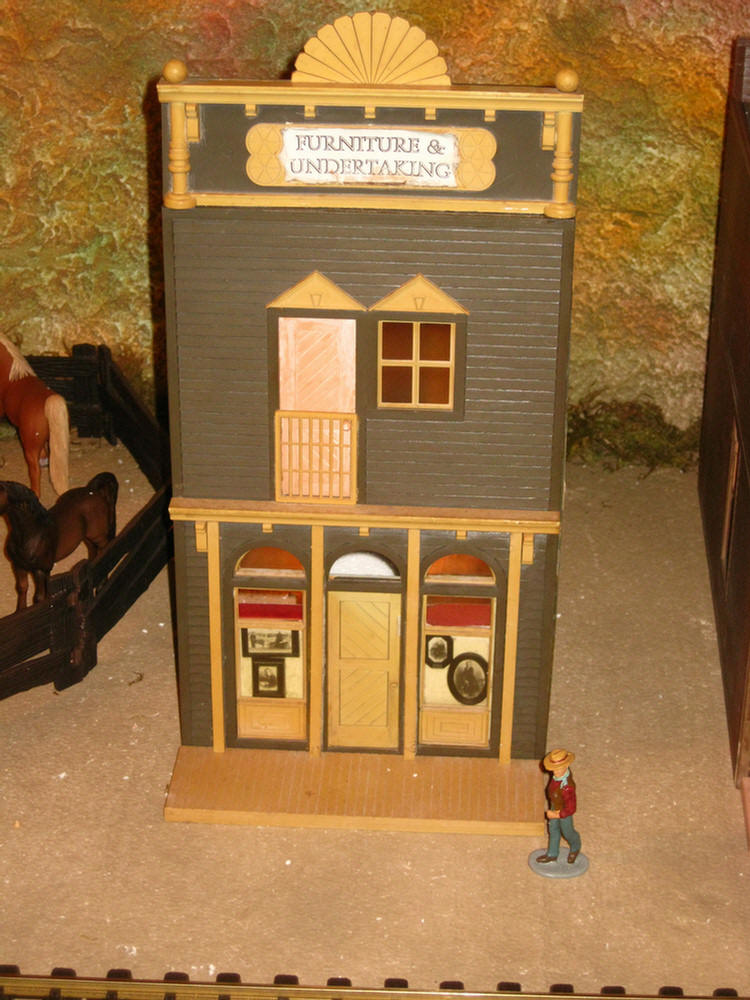
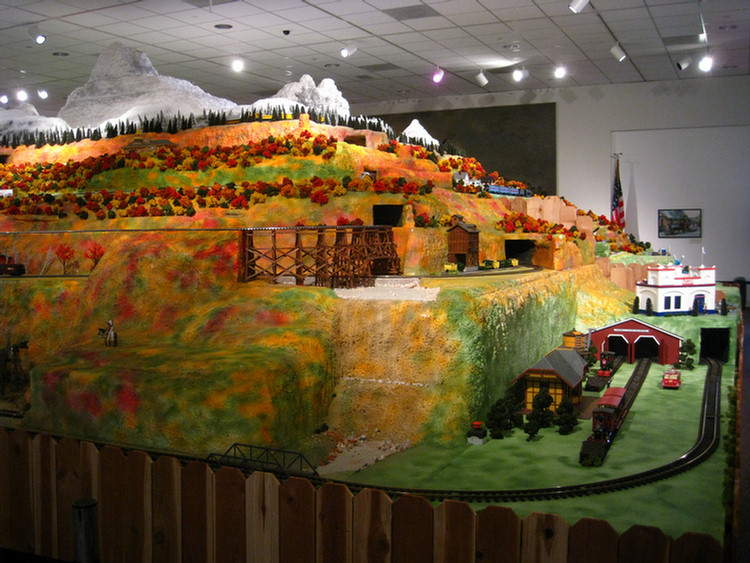
"Tin Plates"
Did you know? - 0 scale (or 0 gauge) is a scale commonly used for toy trains and model railroading. Originally introduced by German toy manufacturer Märklin around 1900, by the 1930s three-rail alternating current 0 gauge was the most common model railroad scale in the United States and remained so until the early 1960s. In Europe, its popularity declined before World War II due to the introduction of smaller scales. Britain stuck to a lower voltage direct current.
0 gauge had its heyday when model railroads were considered toys, with more emphasis placed on cost, durability, and the ability to be easily handled and operated by pre-adult hands. Detail and realism were secondary concerns, at best.
In the United States, 0 gauge is written "O gauge" with the letter "O" and is pronounced as "Oh gauge". It remains a popular choice for hobbyists who enjoy running trains more than they enjoy other aspects of modeling, and collecting vintage O gauge trains is also popular. A number of changes in recent years have addressed the concerns of scale model railroaders, making O scale more popular. More...
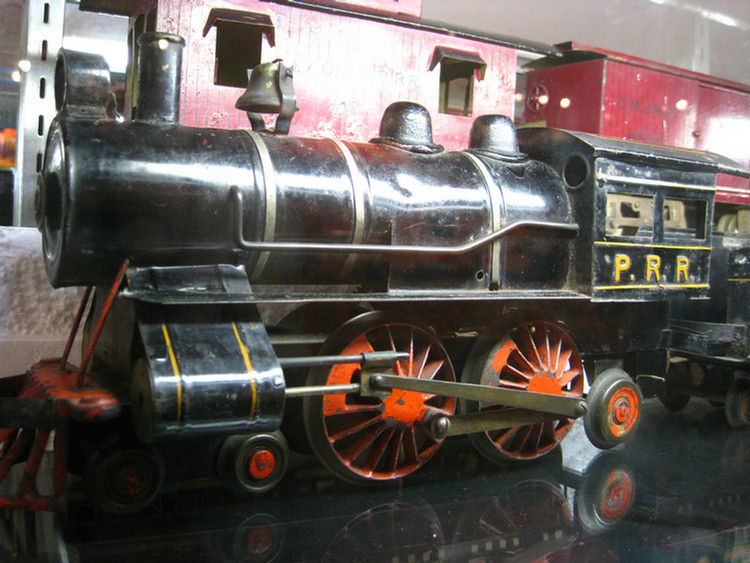
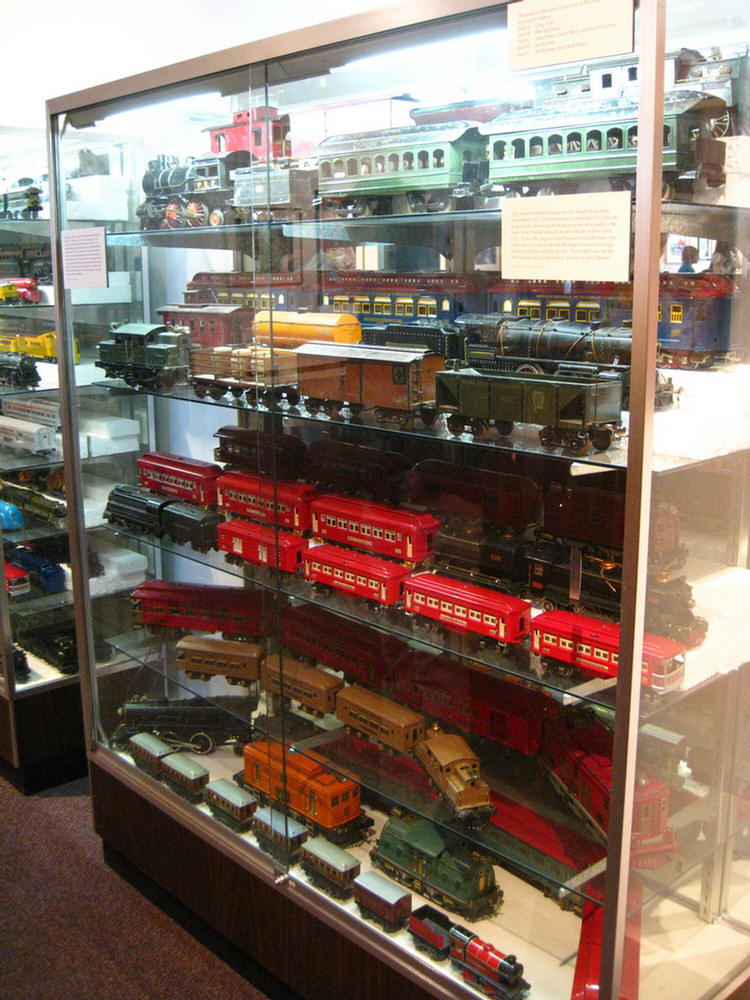
Some of these trains are approaching 100 years old

Disney Was Fascinated With Trains!
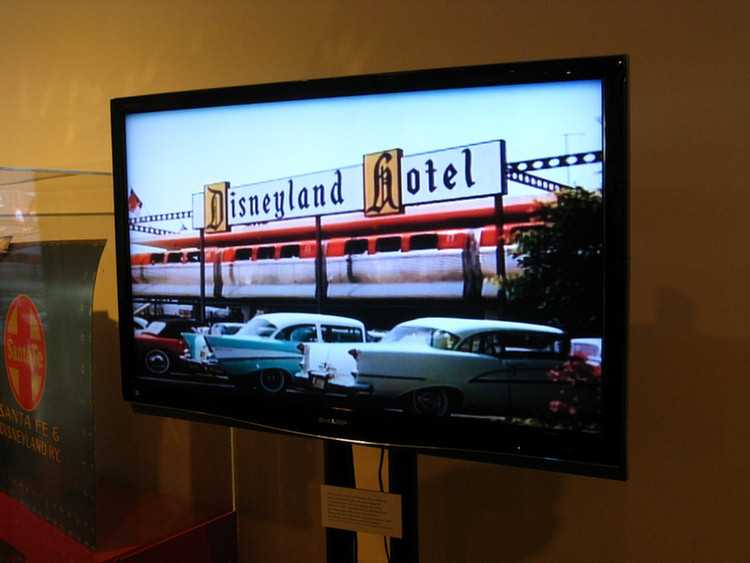
1957 Chevies in the parking lot


Did you know? - The Disneyland Monorail System is an attraction and transportation system at the Disneyland Resort in Anaheim, California, USA. It was the first daily operating monorail in the western hemisphere, and the first in the United States. More...
The Disneyland Monorail System (originally, the Disneyland ALWEG Monorail) opened on June 14, 1959, as a sightseeing attraction in Tomorrowland in Disneyland. The Mark I trains (Red and Blue) consisted of 3 cars each. With the debut of the 4-car Mark II in 1961 (and the new Yellow train), the track was lengthened to leave the park and stop at a station at the Disneyland Hotel. The monorail trains reached their current length of 5 cars in 1968 with the arrival of the Mark III. More streamlined and efficient than the Mark II, the Mark III also included the arrival of Monorail Green. There were two forms of access to the monorail. Persons who were leaving the park or persons at the hotel who had purchased tickets to enter the park could purchase a single ticket to go to the hotel or from the hotel to the entrance in Tomorrowland, respectively. Persons who had not purchased admission to the park could purchase a ticket to ride the monorail from the hotel station, into the park, and back to the hotel station. To prevent them from entering the park without paying, persons buying a monorail ticket who did not have a park admission would be loaded in a separate compartment which would remain locked until the monorail returned to the hotel.
Construction Photos
Did you know? - Styrofoam is a trademark of Dow Chemical Company for extruded polystyrene foam presently made for thermal insulation and craft applications.
In 1941, researchers in Dow's Chemical Physics Lab found a way to make foamed polystyrene. Led by Ray McIntire, they had "rediscovered" a method first discovered by Swedish inventor Carl Georg Munters. Dow acquired exclusive rights to use Munter's patents and found ways to make large quantities of extruded polystyrene as a closed cell foam that resists moisture. Because of its insulating properties and buoyancy, it was adopted in 1942 by the U.S. Coast Guard for use in a six-person life raft. Styrofoam can be used for building materials, including insulated sheathing, pipe insulation and floral and craft products.
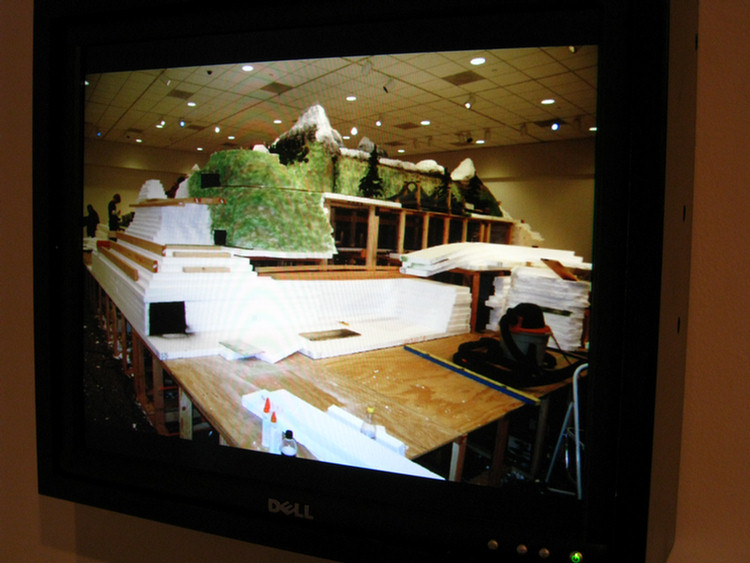
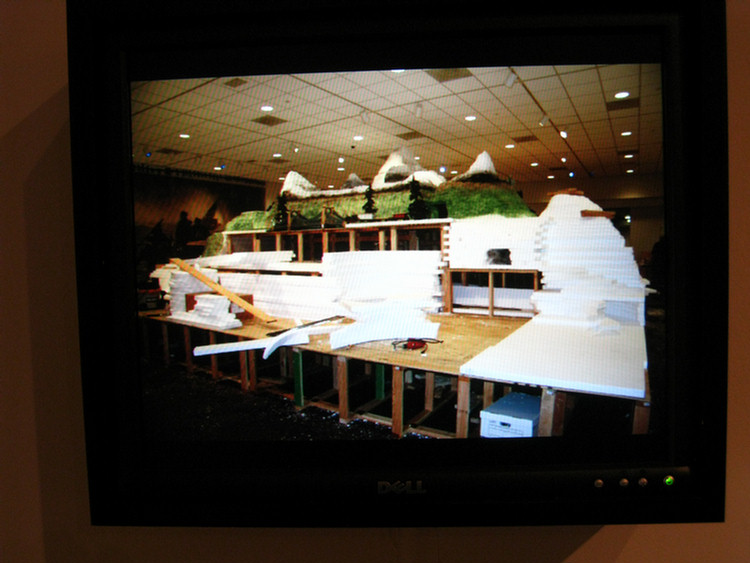

See The Levels
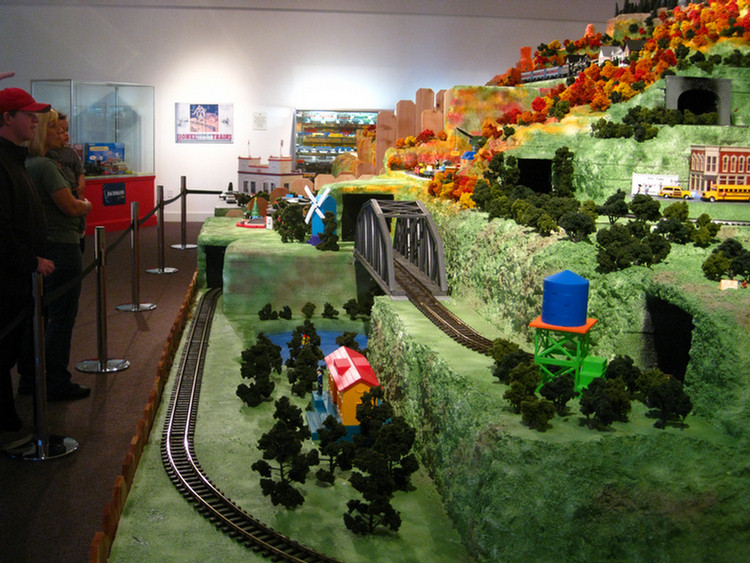
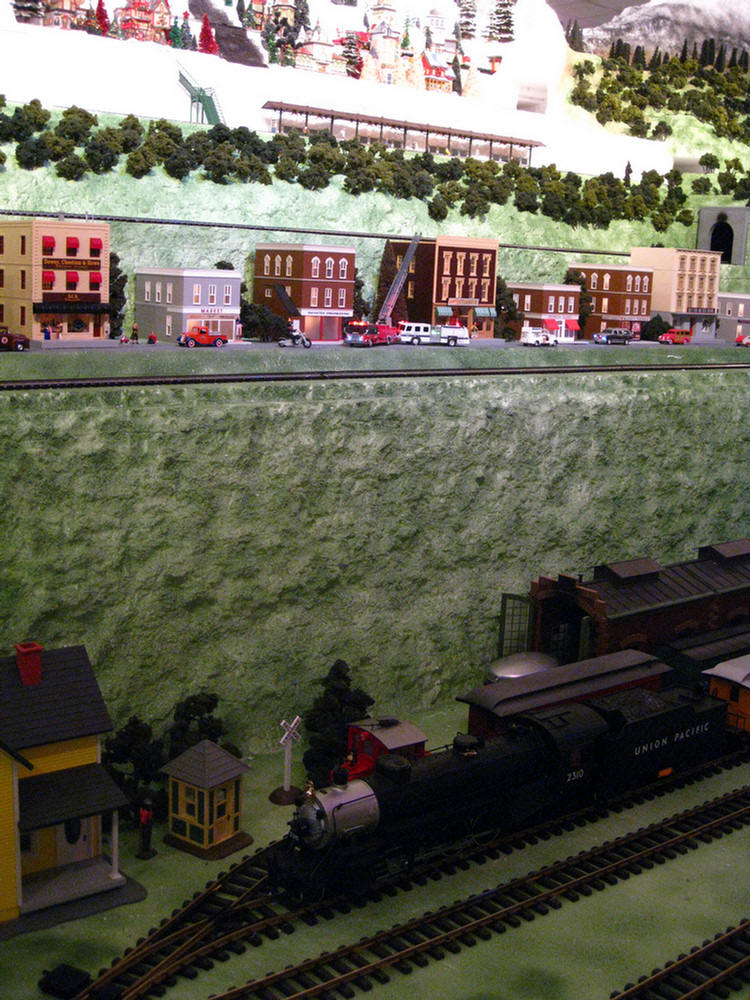

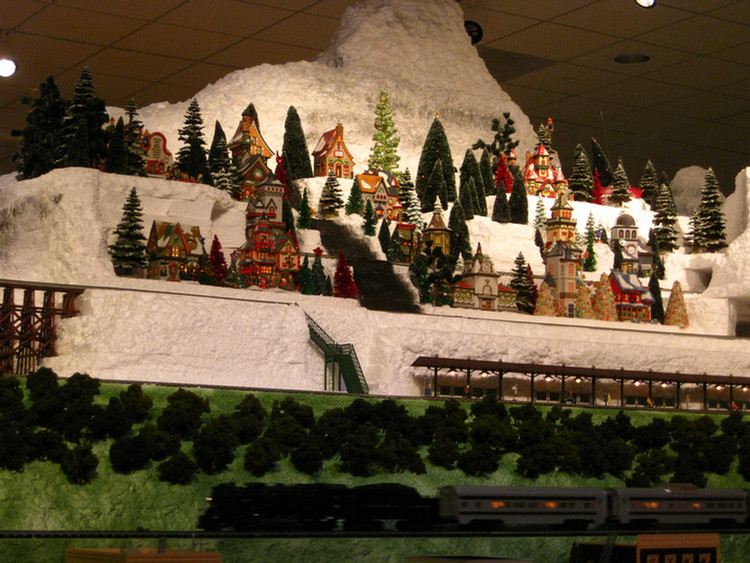
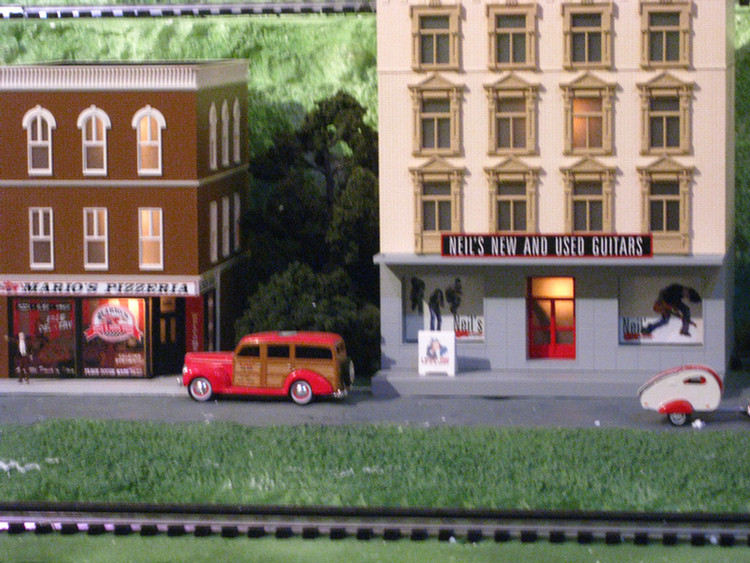
See the "woody"... For Del Kuhn
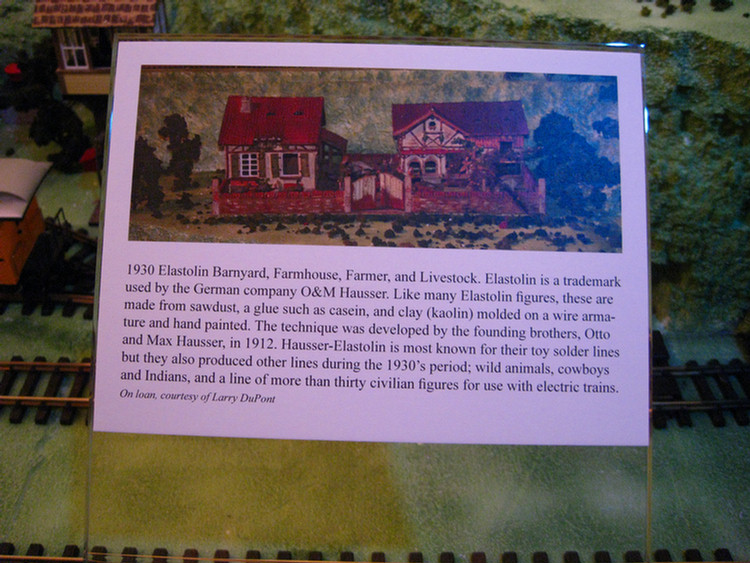
Did you know? - Elastolin is a trademark used by the German company O&M Hausser (O&M Haußer) for the toy soldiers and other types of figures it manufactured from composite material and later from plastic. Elastolin composition figures are made from sawdust, a glue such as casein, and clay (kaolin) molded on a wire armature and hand painted at the factory. The technique was developed by the brothers Otto and Max Hausser in 1912. Some collectors use the term Elastolin to refer to composite figures made by other companies, such as Lineol, as well as those made by Hausser, but this is akin to using the term "Ford" as a generic term for motor vehicles made by companies other than Ford. Hausser figures almost always have an oval base, and the name "Elastolin" is found on the underside of the base of almost all Elastolin figures (Note that the "personality" figures of General Ludendorff and Adolf Hitler seen in the photo have rectangular bases and are Lineol brand figures).
Hausser stopped manufacturing figures from composite materials in 1969. Production of plastic figures continued through 1982. The company filed for bankruptcy in June 1983 and ceased production by the end of the year.


The HO Guage Was At The Top OF The Display

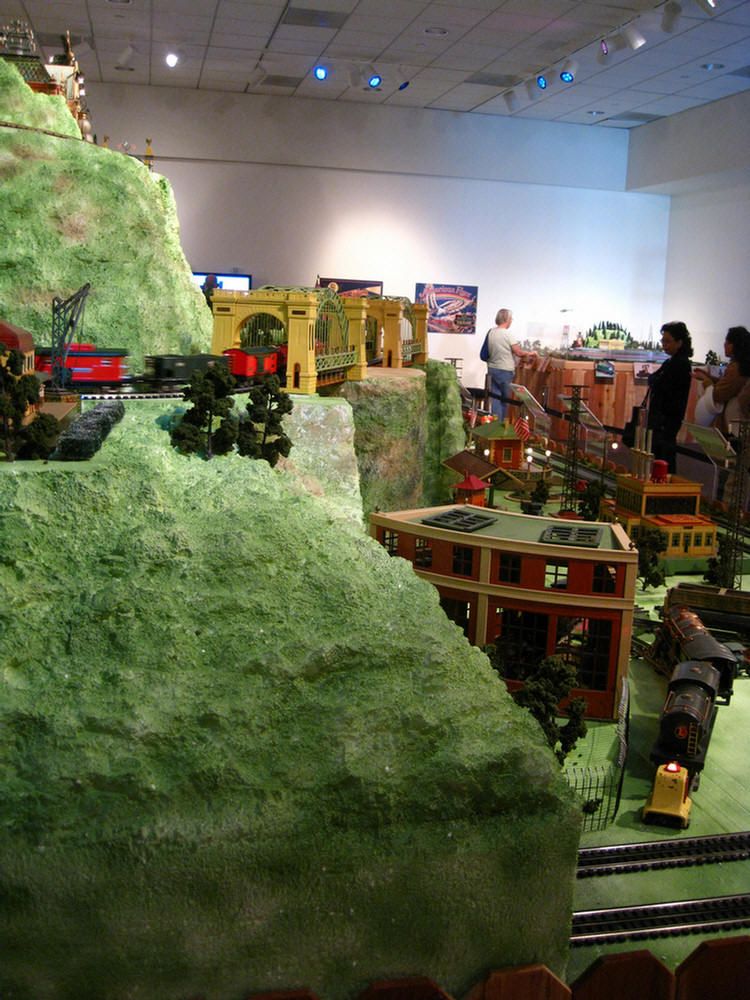
The Old Red Cars Were Represented
Electric trolleys first traveled in Los Angeles in 1887. The Pasadena and Pacific Railway was an 1895 merger between the Pasadena and Los Angeles Ry and the Los Angeles Pacific Ry (to Santa Monica.) The Pasadena and Pacific boosted Southern California tourism by living up to its motto "from the mountains to the sea."
I (Paul) rode these when I was growing up. It was the Venice Line from Downtown LA to Venice Beach.
During this time, by consolidation of many smaller railroads, the Pacific Electric Railway was established by railroad and real estate tycoon Henry Huntington in 1901. Henry's uncle, Collis P. Huntington, was one of the founders of the Southern Pacific Railroad and had bequeathed Henry a huge fortune upon his death. Only a few years after the company's formation, most of Pacific Electric stock was purchased by the Southern Pacific Railroad, which Henry Huntington had tried and failed to gain control of a decade earlier. In 1911, Southern Pacific bought out Huntington except for the LARy, the narrow gauge street car system known locally as Yellow Cars, and SP also purchased several other passenger railways that Huntington owned in the Los Angeles area, including the Pasadena and Pacific. This resulted in what was called the "Great Merger" of 1911. At this time the Pacific Electric became the largest operator of interurban electric railway passenger service in the world with over 1,000 miles (1,600 km) of track. The system ran to destinations all over Southern California, particularly to the south and east.
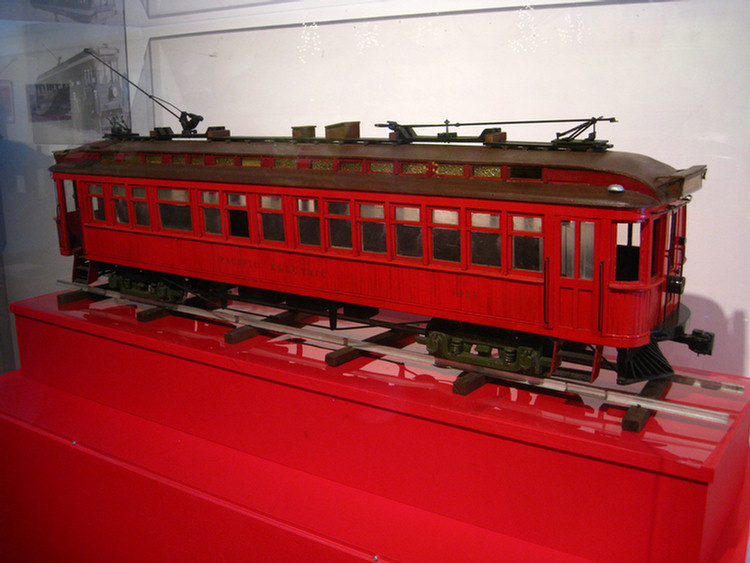
The model was fantastic!
The video ran aout a 20 minute segment continuously. It brought back old memories.

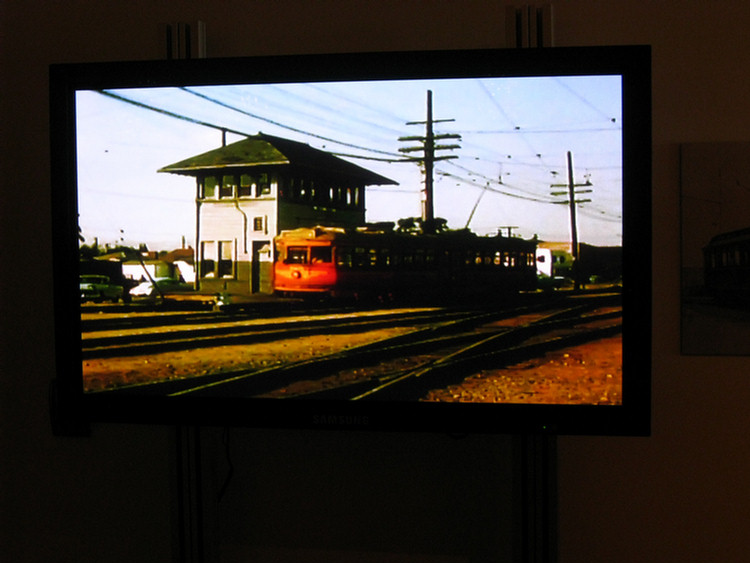



They Added The Helicopter Since We Came Out Last Year
Did you know? - Lieutenant Colonel Gene Boyer, President Nixon's Chief Helicopter Pilot, secured the President's VH-3A "Sea King" helicopter, tail number 150617, to be on permanent display on the library grounds. The helicopter was in the presidential fleet from 1961 to 1976, transporting Presidents Kennedy, Johnson, Nixon, and Ford, and many foreign heads of state and government. Boyer flew President Nixon on his final flight from the White House to Andrews Air Force Base on August 9, 1974 in this aircraft.

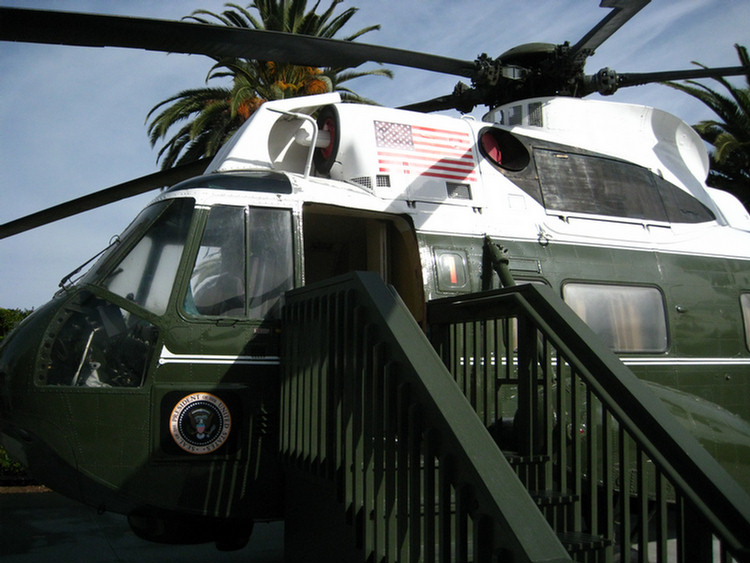
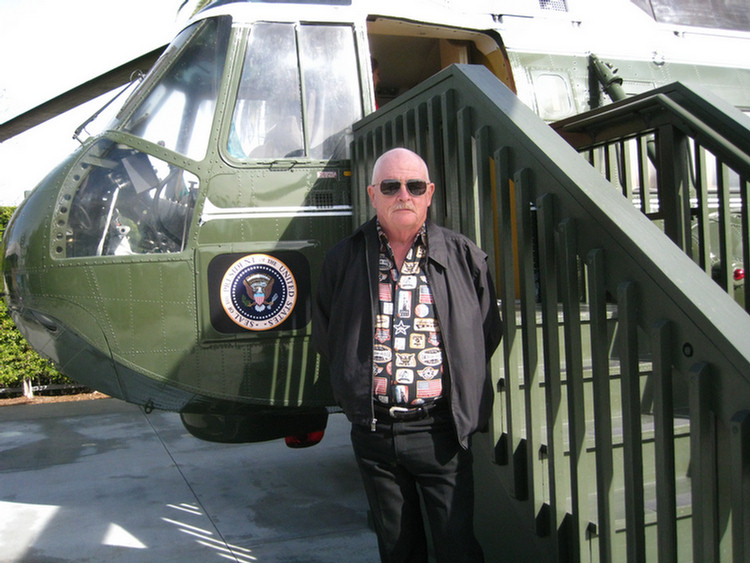
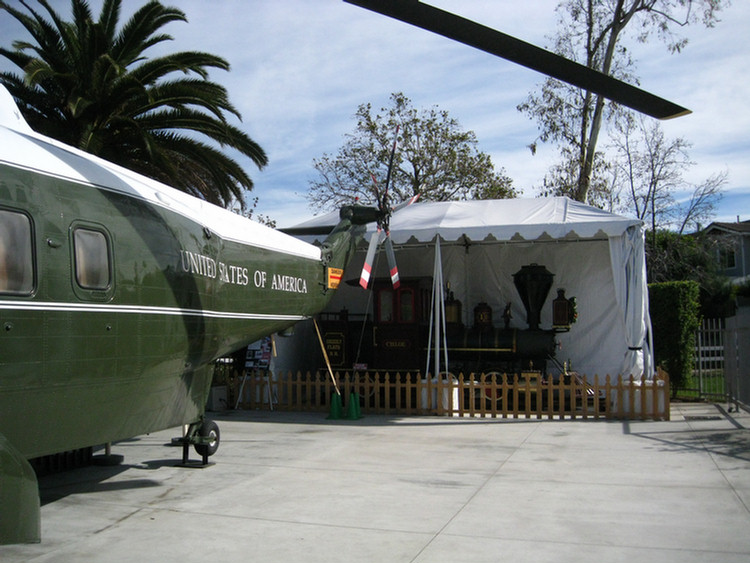
Trains Page One - Trains Page Two - Apollo And Christmas Trees Page Three